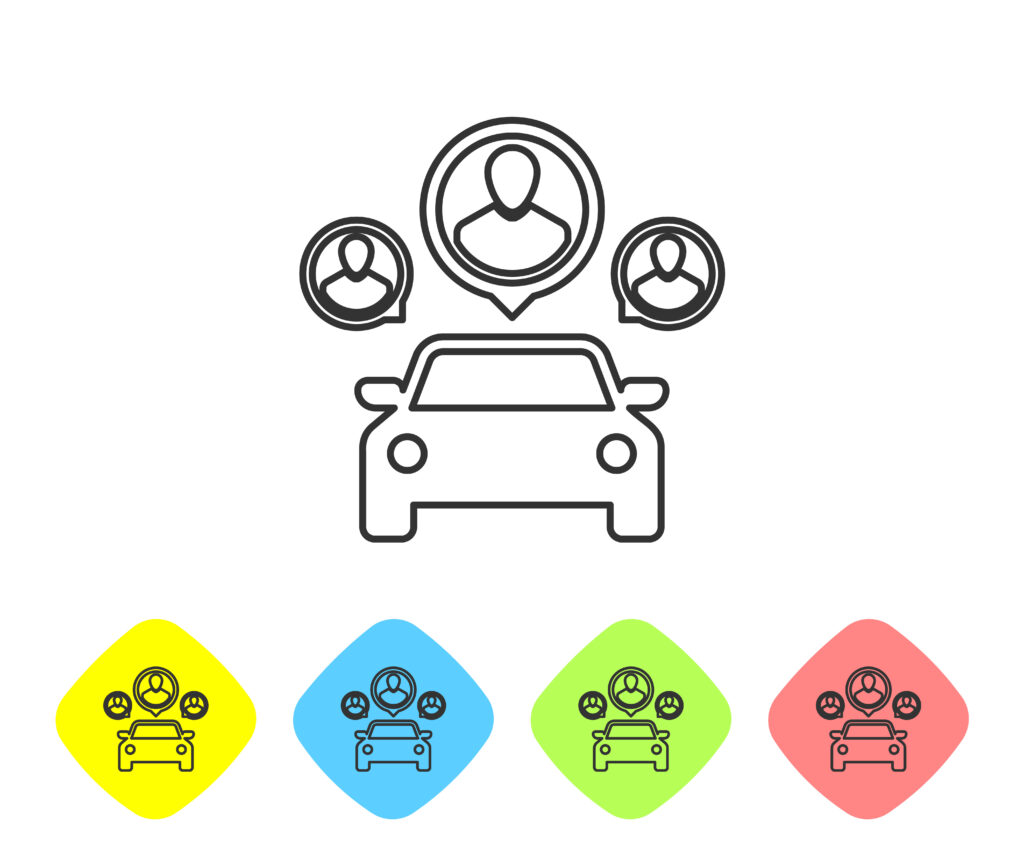EVs and Shared Mobility – Key to Sustainable Mobility
Mobility is one of the biggest environmental problems we currently face. Our community uses resources, manages waste, and constructs cities and transportation systems, all of which point to significant barriers to accomplishing the environmental and social goals on a global scale.

Transportation is currently the largest generator of energy-related CO2 emissions, accounting for 24% of total emissions based on predictions of transportation emissions in 2020. About 75% of transportation emissions came from road traffic. To support communities and economies, people require a seemingly limitless network of automobiles and transportation networks.
A paradigm change is necessary for sustainable urban mobility, whereby private car transportation gives way to various public transportation options. Such as designated lanes for bicycles and pedestrians, electric vehicles, and car sharing. Globally, cities are responding to the challenge, establishing strategies to maintain essential flows of goods, people, and services while reducing global warming and constructing climate-safe cities.
This article will discuss how EVs and shared mobility can contribute significantly toward sustainable mobility.
Why are EVs necessary for Sustainable Mobility?
Why should electric mobility (e-mobility) be done? The sector’s electrification has never been more significant or pertinent to the ongoing discussion about the future of mobility. More than a quarter of energy-related greenhouse gas (GHG) emissions are attributed to the transportation sector. Thus, governments all over the world are taking bold action to slow global warming and meet the goals of a sustainable future. Seven million premature deaths globally occur each year as a result of local air pollution, a significant fraction of which are caused by transportation.

The use of electric mobility has been viewed as one way to transform mobility in support of sustainable transportation. In 2017, there were about 3.2 million electric vehicles on the road worldwide. Nearly 20 million electric and hybrid vehicles will roll off the production line by 2025. All pertinent technologies must improve for e-mobility to advance more quickly and promote sustainable mobility. This comprises lightweight components, electric drive options, and all-inclusive charging services.
How EVs are an excellent choice for a better future?
As a transportation alternative, electric vehicles (EVs) have the potential to replace fossil fuels. The electrification of the transport sector can also result in increased energy efficiency and reduced local pollution. However, there are genuine concerns about meeting EV batteries’ future energy demand from clean and renewable sources. In addition, the supply risks of critical resources used in the batteries of EVs pose a long-term concern for the sustainability of EVs.
As an EV owner, you don’t cause climate change

Whenever you use zero-carbon electricity sources such as solar, wind, and hydro, you’re reversing climate change. Even though it’s partly coal-fired, you still emit fewer emissions than your friend who burns fuel. Together, you can enjoy a long and happy relationship, riding into a safe and sustainable future together.
You aren’t causing air pollution
That’s right! We’re glad that you don’t contribute to diseases. By owning an electric car either for private purposes or for your taxi business, you can eliminate air pollution. Pollution of the air and noise from combustion engines are climatic concerns. Don’t let people hear you. You are making an important contribution to saving the environment for future generations. Compared to hybrid vehicles or internal combustion engine vehicles, electric vehicles offer environmental benefits such as reducing noise levels, pollution, and greenhouse gas emissions.
EV charging advances sustainability
By using electricity rather than fossil fuels to power your transportation, electric vehicles (EVs) aid in the mitigation of climate change. By choosing to drive sustainably, individuals make sustainable decisions. EV sales have increased at never-before-seen rates throughout the years.
People can switch to electric vehicles more easily if they have access to charging stations. In turn, expanding the EV charging network promotes environmentally friendly decisions. In order to cut emissions and reliance on fossil fuels for electricity, charging stations can operate on renewable energy.
Future of Sustainable Mobility through the adoption of shared mobility
According to research, the general public today views private transportation as being significantly safer than that provided by public transportation. Unfortunately, an increase in vehicle ownership is also accompanied by an increase in the need for parking, CO2 emissions, and the number of fatal traffic accidents. In December 2020, as lockdowns were removed all over the world, the economic and industrial recovery rebounded, causing a 2 percent (+60 million tonnes of CO2) increase in worldwide CO2 emissions compared to the same month last year.

To enable us to reach our global sustainability goals, innovative shared mobility trends provide people with feasible and affordable mobility solutions. The success of our society and the environment can be credited to shared mobility and its potential benefits, which include a decline in the use of private vehicles, a decrease in traffic, and an increase in urban space.
How Shared Mobility helps to attain a greener future?
Through the use of shared platforms, shared mobility can help bring about change on a global scale by utilizing many modes of transportation, including cars, mopeds, bikes, and scooters. Individual mobility, micromobility, and multimodal mobility can all be classified as shared mobility platforms, and by 2025, a CAGR of about 25% is anticipated.
Emerging trends include “No-ownership,” the choice to not own material stuff, vehicles favoring pay-per-use service models, and others. Although the revolution is just getting started, it has already begun to alter our habits and assist cities in lowering their carbon footprints. In order to create a sustainable future, one alternative that provides a form of mobility that has many advantages is shared mobility.
- Reduction of CO2 emissions
- Reduce parking spots by over 85% in cities, releasing valuable public space and fundamentally rethinking how space is used.
- May make cities smarter and deliver additional benefits like decreasing traffic congestion, reducing traffic accidents, and reducing travel times.
- Despite being shared mobility modes, they are safer in the event of upcoming viral infections.
- Achieving complete carbon neutrality across the mobility life cycle by focusing only on renewable energy sources
Impact of Shared Mobility on Sustainable Mobility

Commuters must believe that carpooling can make daily activities possible in a sustainable way if they want to use it as a mobility solution. Reduced CO2 emissions are a natural result of fewer moving automobiles. This is a scientific truth. Numerous cities throughout the globe have promoted repeated “no smog days” or other pollution-free initiatives that limit the use of cars in specific areas or times. The biggest advantage for society as a whole is that with fewer cars on the road and fewer pollutants in the air, the air quality will improve, resulting in fewer health issues, particularly respiratory, especially in big cities.
Although shared mobility may seem like a straightforward trend, it has significant advantages for everyone—both those of us present and those yet to come.
Conclusion
Although the degree of these reductions would depend on the form of shared mobility, shared mobility is viewed as a viable strategy to reduce traffic congestion and CO2 emissions. In terms of congestion and CO2 emissions, for instance, trips taken by a single person or a driver and a passenger will be less advantageous than those conducted using public transportation on demand. Given the advantages of shared mobility, it is possible to draw comparisons with electric vehicles, which are viewed as a promising means of lowering CO2 emissions. Indeed, local and federal governments have put in place a variety of incentives to spur the adoption of electric vehicles. These incentives have been examined and scrutinized in order to comprehend their effects and draw conclusions.




